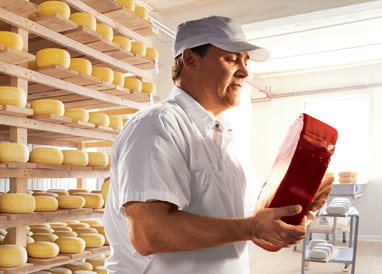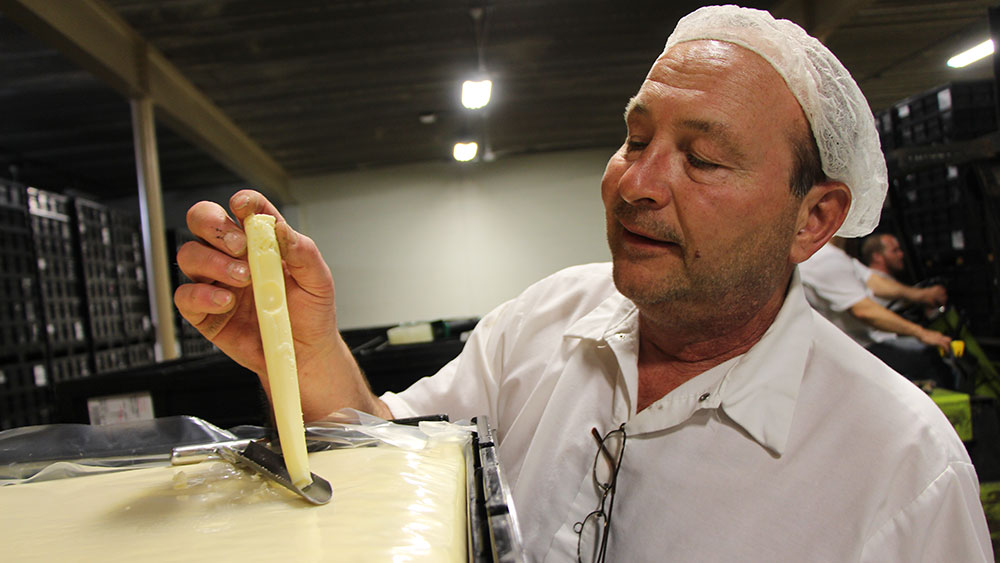Discover the Art of Floridia Cheese: An Overview to Cheese Makers Melbourne
Discover the Art of Floridia Cheese: An Overview to Cheese Makers Melbourne
Blog Article
Unlocking the Tricks of Artisanal Cheese Making: A Step-by-Step DIY Guide
In the world of culinary workmanship, artisanal cheese making stands as a testimony to the fragile balance in between tradition and development. As we begin on this journey to demystify the art of developing exquisite cheeses, we are faced with a tapestry of tricks and skills waiting to be unwinded.
Selecting the Right Milk
When embarking on the trip of artisanal cheese production, the selection of milk plays a critical function in determining the quality and qualities of the final item. The type of milk selected influences the taste, texture, and in general profile of the cheese.
Additionally, the source of the milk, whether from cows, goats, sheep, or buffalo, adds distinct tastes and features to the cheese. Each type of milk brings its own subtleties, allowing for a vast variety of cheese ranges to be crafted based on the picked milk.
Culturing and Coagulating
To launch the cheese-making process, the critical actions of culturing and coagulating should be very carefully performed to change milk right into curds and whey. Culturing entails introducing useful germs to the milk, which after that starts the fermentation procedure. These microorganisms transform lactose (milk sugar) into lactic acid, producing the acidic environment necessary for coagulation. The type of society used can substantially influence the taste, texture, and ripening of the last cheese item.

The timing and temperature control throughout culturing and coagulation are essential factors that affect the last result of celebrity. Proper implementation of these steps is necessary to ensure the wanted texture, flavor, and uniformity of the artisanal cheese being created.
Draining Pipes and Pushing Curds
After the milk healthy proteins have actually coagulated and the curds have actually been reduced to release whey, the next crucial action in artisanal cheese making involves draining pipes and pushing the curds to achieve the wanted appearance and consistency of the final cheese item. Draining is the process of separating the curds from the whey. This can be done by moving the curds into a cheesecloth-lined bowl-shaped sieve or mold and mildew and allowing the whey his explanation to drain off naturally. The time for draining pipes can vary depending upon the type of cheese being made and the desired dampness web content.
Pushing aids eliminate any kind of remaining whey and compacts the curds to develop a strong cheese wheel. Correct draining pipes and pushing are essential actions that dramatically impact the high quality and characteristics of the artisanal cheese being produced.
Aging and Flavoring Methods
Executing precise aging and flavoring techniques is pivotal in boosting the depth and complexity of artisanal cheeses, raising their preference accounts to splendid degrees of improvement and elegance. Aging plays a critical function in establishing the special flavors and appearances that differentiate artisanal cheeses.
Seasoning strategies also contribute dramatically to the final taste of artisanal cheeses. Cheesemakers might select to introduce extra flavors by integrating ingredients such as herbs, spices, and even fruits into the cheese during the production procedure. Additionally, some cheeses are cleaned or massaged with numerous liquids, such as brine or alcohol, to enhance their structures and flavors.
Covering and Storing Cheeses

Conclusion
In conclusion, understanding the art of artisanal cheese making includes thoroughly picking the ideal milk, following precise culturing and coagulating processes, draining pipes and pressing curds properly, and utilizing different aging and flavoring methods. By adhering to these steps faithfully and with attention to information, you can develop your own delicious and special cheeses in the house. Keep in mind to cover and store your cheeses correctly to guarantee ideal flavor and structure advancement. Happy cheese making!
Each type of milk brings its own subtleties, enabling for a wide variety of cheese ranges to be crafted based on the selected milk.After the milk healthy proteins have actually coagulated and the curds have actually been reduced to launch whey, the next critical step in artisanal cheese making includes draining pipes and pushing the curds to achieve the preferred structure and uniformity of the last cheese product. Many cheeses ought to be wrapped in wax paper or cheese paper to allow them to breathe while safeguarding them from drying out. For cheeses that require to additional info proceed aging, such as bloomy rinds or washed skins, ensure they are stored in a trendy environment like a cheese cave or a refrigerator set to the ideal temperature level. By paying interest to the wrapping and storage of artisanal cheeses, cheese manufacturers and enthusiasts can preserve the stability of these delicacies and completely appreciate their complex tastes.
Report this page